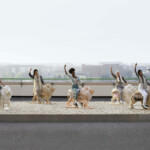
Author Archives for AndrasAdmin

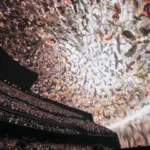
Tipping Point: How New Immersive Institutions Are Changing the Art World
Leave your thoughts <p>In Chris Michaels’s latest article for The Art Newspaper, he delves into the phenomenon of digital art venues that are attracting massive audiences with radical new forms of immersive experiences. He taps into the minds of industry thought leaders, like strategy consultan Andras Szanto, to dissect whether these digital realms pose a threat or offer an exciting opportunity for traditional galleries and museums.</p>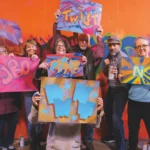
The Next Urgent-Ism: Museums Must Change Their Ageist Ways
Leave your thoughts <p>Museums in the US and beyond are neglecting members of a rapidly expanding demographic who also historically have been the sector’s biggest donors. Read Andras Szanto’s and Brian’s Kennedy Op Ed in the Arts Newspaper, inspired by their keynote presentation for the Vitality Arts Project for Art Museums 2023 Gathering in Minneapolis.</p>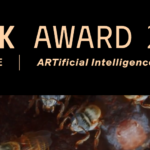
Winners of SFER IK Award Announced
Leave your thoughts <p>The winners for the “SFER IK Award 2023: Art in Nature”, for which András Szántó served as a juror, were announced in early December at a private event hosted by Superblue in Miami, during Art Basel week. First place went to Antoine Bertin, for his piece “The Bat Cloud”. Special recognition were granted to Mari Nagen and Leandro Lima for their work “Siren.” Second place was for Rana Haddad and Pascal Hachem for “Pulse”, and third place to Mika Revell with “Symphony of Circuit and Soil”.</p>
Renewing the Institution: How Do Museums Remain Relevant?
Leave your thoughts <p>Many significant US art museums have just completed or are completing redesigns and extensions. These institutions are not only adding more welcoming facilities, they are also adapting to new times. From integrating new technologies to finding new ways of working and engaging audiences, museums are seeking to reassert their relevance today. Here, three leaders reveal how they are resetting their institutions. As part of Art Basel Conversations, András Szántó will lead a discussion featuring Silvia Karman Cubiñá (Executive Director and Chief Curator, The Bass, Miami Beach), Jillian Jones (Deputy Director, Buffalo AKG Art Museum, Buffalo), and Tonya M. Matthews (President and CEO, International African American Museum, Charleston).</p>
Out of the Picture
Leave your thoughts <p>Out of the Picture is a feature-length film about art critics living through a period of transformation for both art and media. Not only has the art world changed, Art’s place in the world has changed, too. All of this change makes the job of discerning what’s genuinely artful, what’s worthy of our collective attention—the pathfinding role of critics—as essential and challenging as it’s ever been. Many of the survey’s questions in the film replicat those of a seminal study done 15 years prior by the National Arts Journalism Program at Columbia University, under the leadership of András Szántó, who was an adviser to our survey and the documentary film.</p>
Pinacoteca Contemporânea
Leave your thoughts <p>On Saturday October 28, join András Szántó, author of the book “The future of museums” and Paula Zasnicoff, from Arquitetos Associados, for a conversation on new perspectives for art institutions, moderated by architect Isabel Xavier, at the the recently opened Pina Contemporânea building in Sao Paulo.</p>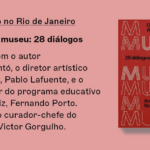
Portuguese Edition of “The Future of the Museum: 28 Dialogues”
Leave your thoughts <p>This Thursday October 26, at 7 p.m., at Inclusartiz, in Rio de Janeiro, the launch of the Portuguese edition of “The Future of the Museum: 28 Dialogues” will take place, with a conversation between the author and guests about possible ways to build an empathetic, aggregating and relevant museum for contemporary audiences. The conversation will be with the author András Szántó, the artistic director of the Museum of Modern Art in Rio de Janeiro (MAM Rio), Pablo Lafuente, and the coordinator of Inclusartiz’s educational program, Fernando Porto. Mediation by Inclusartiz’s chief curator, Victor Gorgulho.</p>
András Szántó at the International Book Biennial in Jaraguá Do Sol
Leave your thoughts <p>What is the role of museums today? In a world of deepening inequality, amid political and environmental crises, how can we combine new approaches to curation, audience engagement, technology, inclusion and learning to expand the role of art and culture in society? András Szántó will discuss the future of the museums at the International Book Biennial in Jaraguá Do Sol, Brazil. After the talk, there will be a book signing for “The Future of the Museum: 28 Dialogues”.</p>
Capturing the Mindset of a Generation of Museum Architects
Leave your thoughts <p>András Szántó spoke with Hungarian magazine Octogon about what kind of “hardware” the art institutions of the future will need. Read the full interview with the link. </p>
Icon Magazine
Leave your thoughts <p>“Traditional museum buildings are imposing, often built in a sepulchral neoclassicist style that hulks over people below while insisting on a particular Western-centric idea of art and history. There have been some changes since – many a side effect of the commercialisation of museums as competing tourist attractions with an eye on audience numbers – but the old model remains robust even as architects and museum directors have tried to create museums that reflect changing times”, writes Joe Lloyd in his review of “Imagining the Future Museum: 21 Dialogues with Architects” by András Szántó.</p>